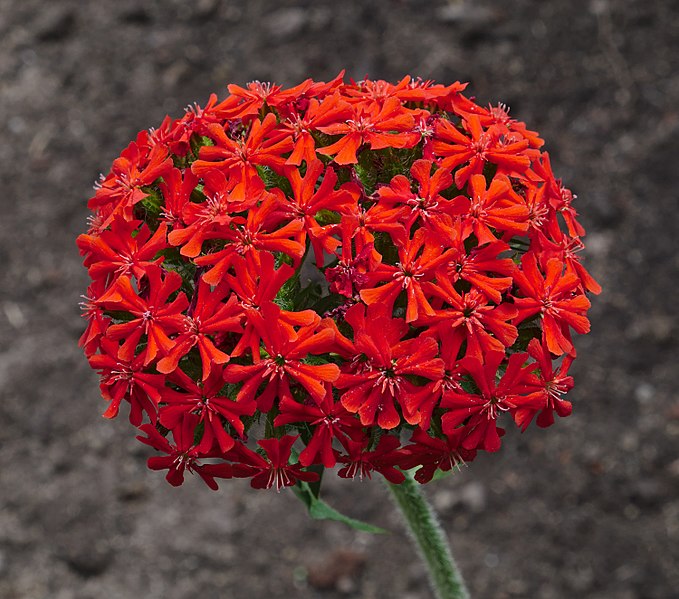 |  |  |    |  |
 |
Maltese-Cross is a perennial plant. Its stems are erect, little branched, heavily hairy, 50-100 cm tall. Spade-shaped rhizomes. Stem leaves ranging from lanceolate to ovate. 12 cm long, coarsely hairy on both sides, coarsely hairy along the edge of the leaf and on the underside of the center of the leaf.
A head-shaped inflorescence with 10-50 flowers is located at the top of the stem, they are almost sessile, 1-1.5 cm in diameter. The flower is bright pink, rarely white or pink, the petals are divided into two parts. Seed ovoid case <1cm in diameter, which opens into five parts. Seeds red-brown, bean-shaped. The plant is pollinated by a butterfly and easily propagates by seed.
The plant blooms at the end of June and flowering lasts up to 75 days.
The flowers, leaves and roots of the plant are used for medicinal purposes. All parts are harvested before the plant has fully flowered or produced seeds (usually between May and August). During this time, the plant accumulates the most valuable substances.
The collected plant mass is dried in shady and well-ventilated places, usually forced drying is not used. Store in a dry place, in paper bags for no longer than 1 year.
The chemical content of the Maltese-Cross has been studied minimally. However, it is known that the main, active substance of Maltese-Cross is ecdysteroids, phenolic compounds: flavonoids, hydroxycinnamic acid, coumarins; polysaccharides, saponins and vitamins.
MEDICAL SIGNIFICANCE
The plant is not used in official medicine, but the substances contained in it are very useful for maintaining human health! The substances present in the plant are anti-inflammatory and antimycotic.
In ancient times, this plant was used as a soap to rid the hands of excess oiliness and dirt.
By understanding the direction of the plant's action, it can be perfectly used as a cosmetic, starting from adding the decoction to the bath to finally making extracts from it.